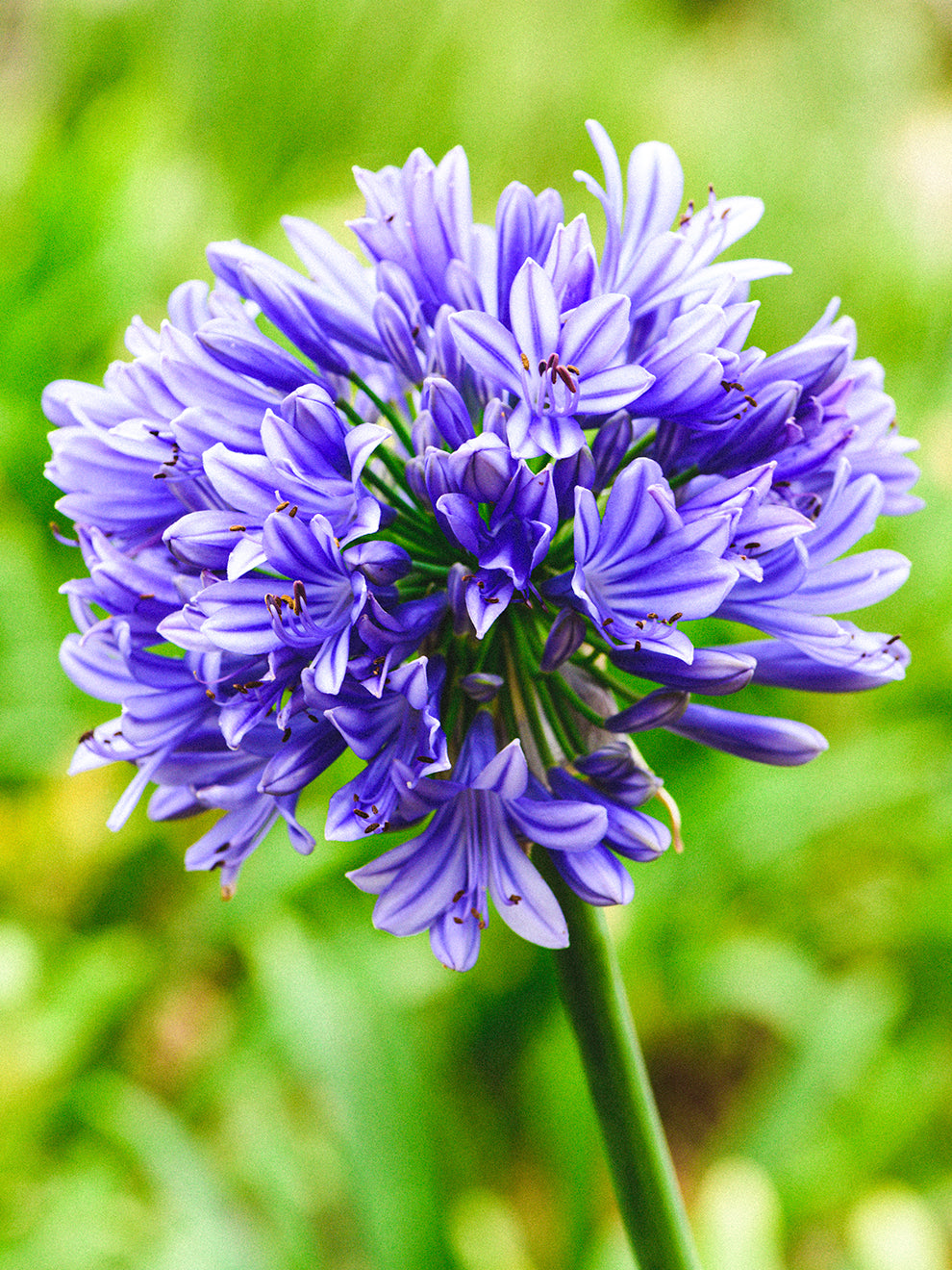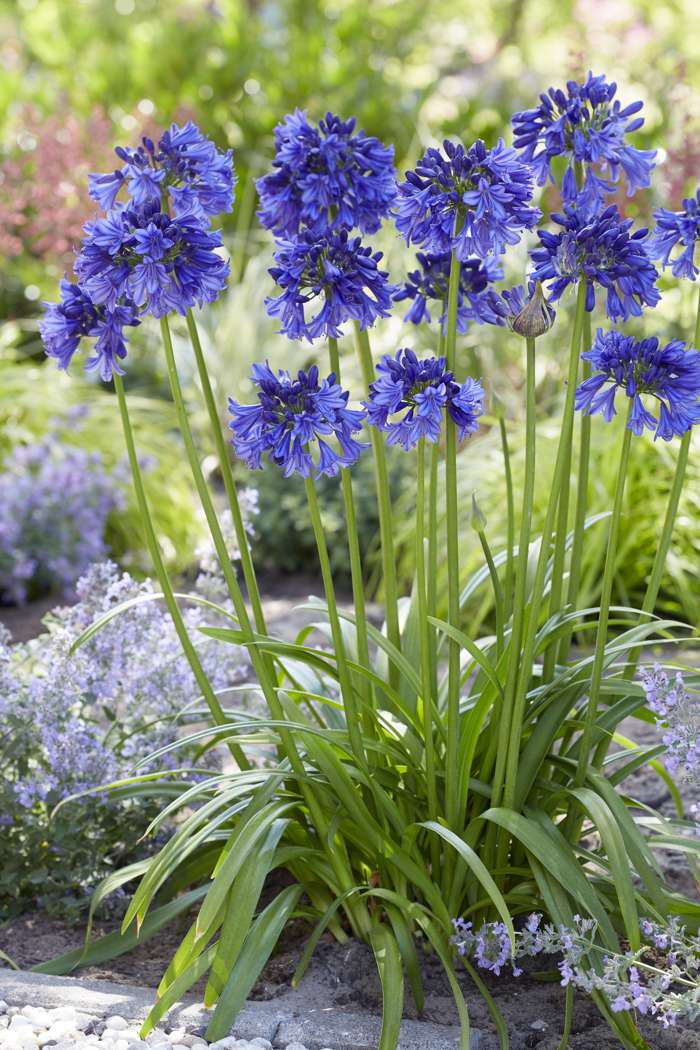Common Agapanthus Troubles and Exactly How to Solve Them
Common Agapanthus Troubles and Exactly How to Solve Them
Blog Article
Mastering the Art of Agapanthus Treatment: Essential Steps for Healthy Development and Dynamic Flowers
In the realm of horticulture, the farming of agapanthus stands as a fulfilling endeavor for those that seek to support these stylish blooming plants. With their striking blooms and stylish foliage, agapanthus has captured the focus of gardeners worldwide. Nonetheless, accomplishing optimum development and dynamic blooms requires a nuanced approach that encompasses different vital steps. From picking the best variety to mastering trimming methods, the journey in the direction of growing thriving agapanthus plants is complex and holds the vital to unlocking the complete potential of these botanical treasures.

Selecting the Right Agapanthus Selection

When selecting the best Agapanthus variety for your garden, consider aspects such as environment viability, bloom shade, and growth habit. In addition, think about the environment in your area to make certain the Agapanthus variety you choose can flourish in your details conditions. Comprehending the growth routine of different Agapanthus varieties is crucial for proper positioning within your garden.
Suitable Growing Problems
Thinking about the optimal environmental demands is vital for successful Agapanthus cultivation. Agapanthus plants are delicate to cold temperature levels and need to be shielded from frost during wintertime months.
To make certain healthy and balanced development and vibrant blossoms, plant Agapanthus bulbs at a depth of about 2-4 inches and room them 8-12 inches apart. Adding natural matter, such as garden compost, to the soil can enhance drain and fertility, promoting robust origin growth. Mulching around the base of the plants helps keep dampness and reduces weed development. Regular watering is essential, particularly throughout the growing season, to keep the dirt regularly damp but not waterlogged.
Watering and Feeding Tips
Maintaining correct moisture degrees and providing necessary nutrients are key aspects in the care program for Agapanthus plants. When it comes to watering Agapanthus, it is vital to strike an equilibrium. These plants like consistently wet soil yet are susceptible to root rot if overwatered.
Feeding Agapanthus is essential for advertising healthy development and prolific flowers. Apply a well balanced plant food, such as a 10-10-10 formula, in the very early spring as new growth emerges. Repeat this application every 6-8 weeks throughout the growing season. Stay clear of excessive fertilization, as it can result in lavish vegetation at the cost of flowers. Constantly adhere to the maker's directions for appropriate dilution and application methods. By following these watering and feeding ideas, you can ensure your Agapanthus plants grow and create lively, durable flowers.
Trimming Strategies for Agapanthus
Trimming Agapanthus plants at browse around this site the appropriate times important link and with proper methods is critical for maintaining their wellness and promoting optimal growth and blooming. The suitable time to prune Agapanthus is in late winter or early springtime before new growth arises.
For flowered stems, wait until the blossoms have withered and after that trim them back to the base. This not only cleans the plant's appearance yet additionally motivates the development of new blossom buds. Deadheading invested flowers can additionally redirect the plant's power into producing even more flowers as opposed to establishing seeds. Nonetheless, if you want to collect seeds for proliferation, leave some blossoms to completely dry and mature on the plant.
Bear in mind to make use of tidy, sharp tools to make specific cuts and minimize the danger of presenting diseases. Agapanthus. Regular pruning will assist keep your Agapanthus looking healthy and neat while making more helpful hints sure an abundant display of attractive blossoms
Handling Usual Bugs and Diseases
After making sure proper pruning techniques for Agapanthus, it is important to address usual bugs and diseases that can affect the health and wellness and vitality of these plants. One typical pest that impacts Agapanthus is the Agapanthus gall midge.
One more typical problem is fungal leaf area, which presents as dark lesions on the fallen leaves. To avoid fungal diseases, make certain excellent air flow around the plants, stay clear of overhanging watering, and remove any contaminated fallen leaves immediately. Additionally, Agapanthus plants can experience from origin rot if they are planted in poorly draining dirt. To avoid this, plant Agapanthus in well-draining soil and stay clear of overwatering. By being vigilant and taking timely action versus parasites and diseases, you can aid your Agapanthus plants thrive and produce vivid flowers.

Conclusion
In conclusion, mastering the art of agapanthus care entails selecting the best range, offering ideal growing problems, proper watering and feeding, proper pruning strategies, and addressing typical pests and diseases. By following these important steps, you can make sure healthy and balanced growth and lively flowers for your agapanthus plants. Bear in mind to regularly monitor and preserve your plants to advertise their overall well-being and long life.
To ensure healthy growth and vibrant blossoms, plant Agapanthus bulbs at a deepness of regarding 2-4 inches and space them 8-12 inches apart. By adhering to these watering and fertilizing tips, you can guarantee your Agapanthus plants prosper and produce vivid, long-lasting flowers.
One typical parasite that impacts Agapanthus is the Agapanthus gall midget. In addition, Agapanthus plants can suffer from origin rot if they are planted in poorly draining pipes dirt. By following these necessary actions, you can guarantee healthy growth and lively flowers for your agapanthus plants.
Report this page